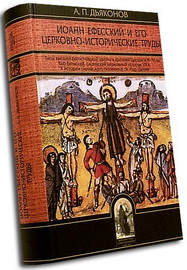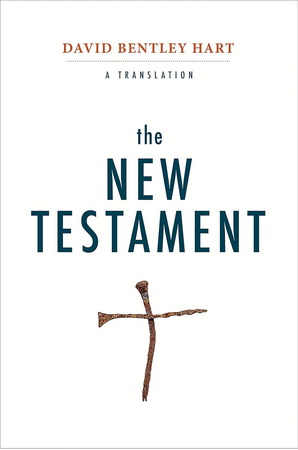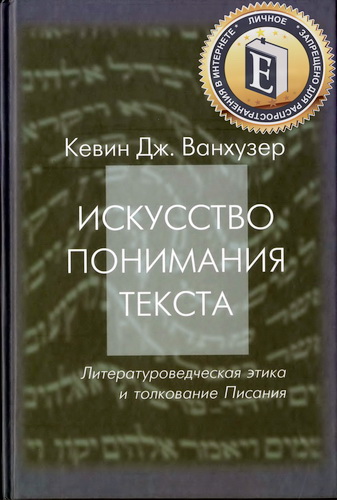
Hart David Bentley – The New Testament – A Translation

To write yet another translation of the New Testament is probably something of a foolish venture. To revise such a translation for a second edition is arguably to repeat the same folly, on a grander scale. No matter what one produces— recklessly liberal, timidly conservative, or something poised equilibriously in between—it will provoke consternation (and probably indignation) in countless breasts. There are so many traditions, denominations, assemblies, and devotions—so many magisteria, critical schools, theological factions, and assorted individuals with idiosyncratic spiritual commitments—that one can never hope to please everyone at once, or perhaps anyone entirely. And, as scarcely needs be said, there is an entire guild of New Testament scholars, most of whom owe allegiance to some dogmatic tradition or critical theory, and each of whom is likely to favor his or her understanding of the text over every other. Even the doctrinally indifferent or academically uninvolved are apt to have very particular prejudices regarding what style is most appropriate for rendering scripture into a modern language: whether, for example, one’s principal concern should be to produce good literature or to provide a stringently faithful gloss; whether one should strive more for explanatory clarity or for literal accuracy; whether one should substitute modern equivalents for the obsolete idioms of the ancient world or remain obedient to the unfamiliar diction of the original despite any awkwardness that might ensue; whether paraphrase is a duty or a sin; and so on. It is a game in which no player prospers.
Yet, even so, here again is my attempt at a new translation, in its second and final iteration. In a sense, I spent years preparing for the first version. At least, I had often enough found myself retranslating passages of the New Testament for students in a lecture hall, in a rather ad hoc fashion, because whatever printed translation they were using obscured aspects of the original text I thought extremely important. To be honest, I have come to believe that all the standard English translations render a great many of the concepts and presuppositions upon which the books of the New Testament are built largely impenetrable, and that most of them effectively hide (sometimes forcibly) things of absolutely vital significance for understanding how the texts’ authors thought. At times this is a result of the peculiarities of the translators’ linguistic, historical, or conceptual training. More often it is the result of their commitment to one or another specific theological tradition or predisposition. And occasionally it is the result of their loyalty to some prevailing theory of translation (such as “dynamic equivalence theory”) that encourages them to make the line between translation and interpretation perilously hazy. Really, it is usually the result of all these things at once, inasmuch as almost all modern translations of the text have been produced not by single scholars with their own particular visions of the texts but by committees. The inevitable consequence of this is that many of the most important decisions are negotiated accommodations, achieved by general agreement, and favoring only those solutions that prove the least offensive to everyone involved. This becomes, in effect, a process of natural selection, in which novel approaches to the text are generally the first to perish, and only the tried and trusted survive. And this can result in the exclusion not only of extravagantly conjectural readings, but often of the most straightforwardly literal as well. (A sort of “acid test” for me is Judas [or Jude] 1:19, a verse whose meaning is startlingly clear in the Greek but which no collaborative translation I know of translates in any but the vaguest and most periphrastic manner.) I think I have come to be opposed to translation by mass collaboration on principle, even when (as in the case of the King James) the final product is literarily admirable. All such renderings, it seems to me, become ineluctably mired in the anodyne blandness and imprecision of “diplomatic” accord.
David Bentley Hart – The New Testament – A Translation
New Haven and London: Yale University Press, 2023. – 644 p.
ISBN 978-0-300-26570-5 (paperback)
David Bentley Hart – The New Testament – Contents
Preface to the Second Edition
Acknowledgments
A Note on Transliteration
Introduction
- The Gospel According to Matthew
- The Gospel According to Mark
- The Gospel According to Luke
- The Gospel According to John
- The Acts of the Apostles
- The Letter to the Romans
- The First Letter to the Corinthians
- The Second Letter to the Corinthians
- The Letter to the Galatians
- The Letter to the Ephesians
- The Letter to the Philippians
- The Letter to the Colossians
- The First Letter to the Thessalonikans
- The Second Letter to the Thessalonikans
- The First Letter to Timothy
- The Second Letter to Timothy
- The Letter to Titus
- The Letter to Philemon
- The Letter to the Hebrews
- The Letter of James
- The First Letter of Peter
- The Second Letter of Peter
- The First Letter of John
- The Second Letter of John
- The Third Letter of John
- The Letter of Judas
- The Revelation of John
Postscript




Комментарии
Пока нет комментариев. Будьте первым!